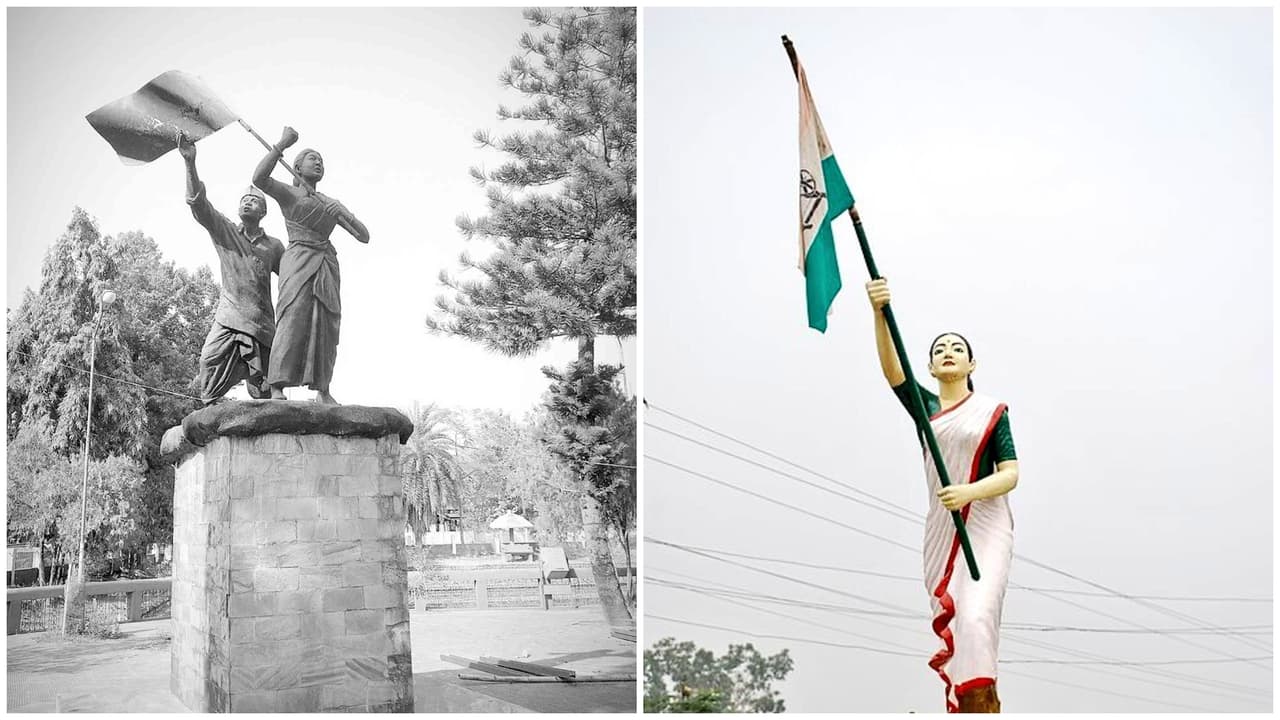Kanaklata Barua, the 17-year-old martyr from Assam, who dared to hoist the national flag and was gunned down for it—her body collapsing, but the tricolour never touching the ground.
India has many great, historical tales and legacies to tell. The fight for independence, in particular, was able to bring out the heroes from across the country. One such soul is Kanaklata Barua, the 17-year-old martyr from Assam, who dared to hoist the national flag and was gunned down for it—her body collapsing, but the tricolour never touching the ground. Kanaklata Barua, a teenage warrior, knew no fear. Born on December 22, 1924, in Barangabari village in Assam’s Gohpur sub-division, Kanaklata faced tragedy early on. She lost her mother at the age of five, and after her father’s remarriage and subsequent death, she was orphaned by 13. She left school and took on the responsibility of raising her younger siblings. But while personal sorrow engulfed her young life, it never overshadowed her burning desire to fight for India’s freedom.
The country was already gripped by the fire of revolution—sparked by the Jallianwala Bagh massacre and later fanned by Mahatma Gandhi’s Non-Cooperation Movement. In this turbulent era, Kanaklata’s patriotic fervour took root. According to Feminism in India, she initially sought to enlist in Netaji Subhash Chandra Bose’s Azad Hind Fauj, but was rejected for being underage. Undeterred, she set her sights on the Mrityu Bahini, or “death squad,” formed by Pushpalata Das to enlist women from the undivided Darrang district in the freedom struggle.
Though the group only admitted adults, Kanaklata’s unwavering zeal earned her a place—and eventually, leadership of the women’s unit. “She was under 18 years when she joined Mrityu Bahini. She was granted membership because of her zeal to serve the country. She was subsequently made the leader of the women cadres of Mrityu Bahini,” notes the report.
On September 20, 1942, Kanaklata led nearly 5,000 unarmed protestors towards the Gohpur police station to unfurl the national flag—a symbol the British had outlawed. As they approached, Rebati Mahan Som, the officer in charge, warned them to retreat or face gunfire. But Kanaklata stood her ground and declared, “You do your duty and I’ll do mine,” before marching forward with the flag in hand.
The police opened fire.
The 17-year-old girl at the helm was shot at point-blank range. Yet, in her dying moments, she clutched the tricolour tightly, refusing to let it fall. Only when Mukunda Kakoti, another volunteer, took the flag from her dying hands, did she let go. Both died of their injuries that day but not before the flag was hoisted, defying British orders and immortalising their sacrifice.
Though absent from mainstream history textbooks, Kanaklata Barua is revered in Assam. Her legacy continues through schools and parks named in her honour, and a life-sized statue that stands tall as a symbol of her bravery.
Her story reached the silver screen through Chandra Mudoi’s Assamese film Epaah Phulil Epaah Xoril, with a Hindi adaptation titled Purab Ki Awaz released in 2017. And in 2020, the Indian Coast Guard paid tribute by naming a patrol vessel the ICGS Kanaklata Barua, stationed in Kolkata. Built by Garden Reach Shipbuilders and Engineers, the vessel patrols India’s seas, a fitting tribute to a girl who once marched into gunfire with nothing but a flag and unyielding courage.
